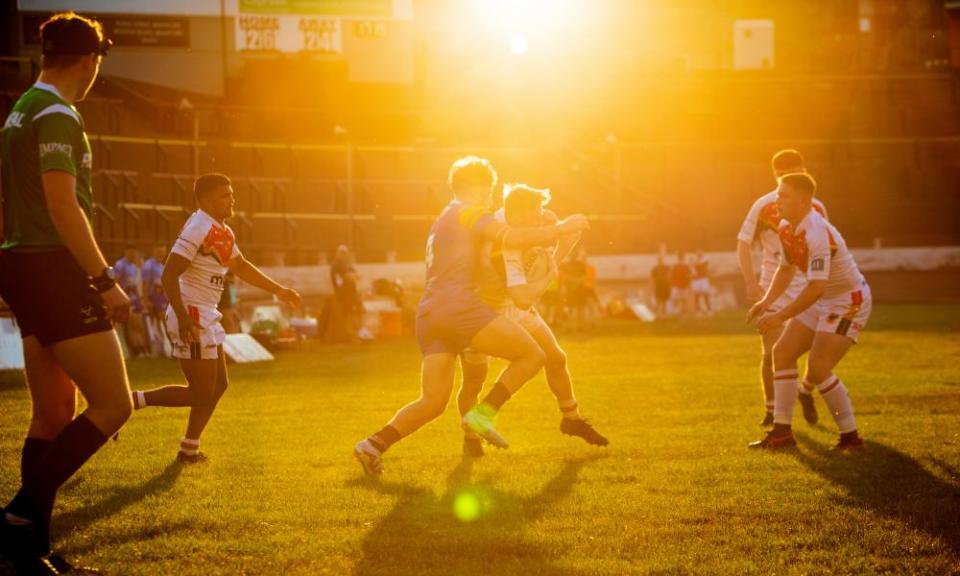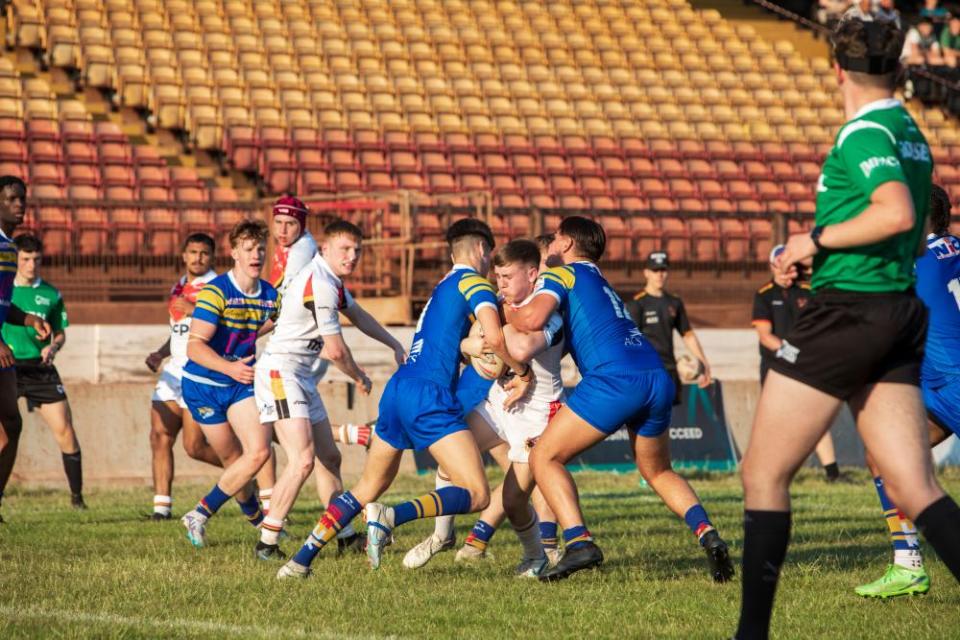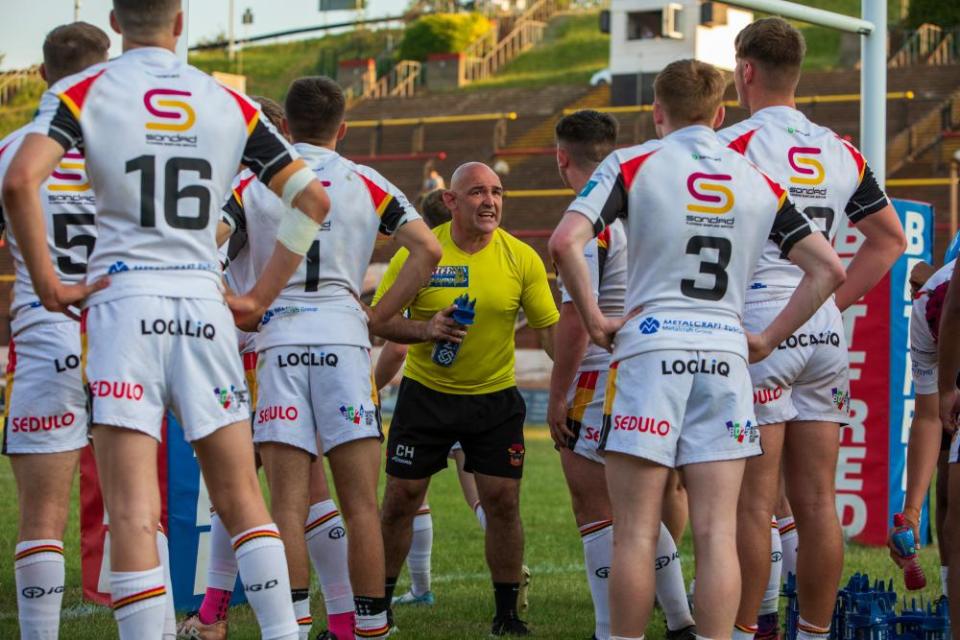
Bradford’s Odsal Stadium has had its fair share of significant moments in rugby league history but these days it is hardly the first place you would think of to describe the word groundbreaking. This vast bowl can house 25,000 but in this instance the terraces are scattered with no more than a few dozen people, many of them parents watching their children play in an academy match between Bradford and Leeds on a sun-kissed Thursday evening.
However, they are present for a genuine moment of history. Both rugby codes have disclosed their intent to lower the legal tackle height in the years ahead; some think it is a reactive move to the growing number of players taking legal action against the sport they played, others see it as simply a progressive step to protecting the players better. But whatever the reason, this is league’s first move into a new era of contact sport, with a six-week trial across four rounds of academy fixtures where only tackles below the armpit are legal, lowered from below the shoulder.
Related: Rugby league strives to step up amid Premiership’s collective crisis
It sounds a marginal change. We are talking a few inches. But the mood in the stands where the scientists behind this trial are housed along with senior members of the Rugby Football League can be summed up in one word: tense. That mood is hardly helped when the first tackle of the game produces a penalty for a high tackle, resulting in groans from those in attendance. That quickly becomes the theme of the evening.
The lead on this trial is Prof Ben Jones from Leeds Beckett University. “As a definitive trial we’ll be looking at things around contact to the head, head acceleration and the in-game metrics, in addition to the published literature that exists around concussion mechanisms and tackle injuries that will be considered around what the tackle height looks like moving forward,” Jones says. “My sense is that the clubs are really behind it.”

However, it quickly becomes apparent that this will be a testing night for all concerned. After 10 minutes there have been 10 penalties. By half-time that number is 23. At full time there have been an astonishing 57 penalties, 49 of them for high tackles. For context, a regular Super League game would be deemed stop-start if there were more than 15 penalties. It is painfully clear that the players have struggled to adapt on the opening night of the trial.
“I understand what the RFL are doing but something has to be better than that for us to make our sport safer because that is very difficult to watch and play in,” the Leeds head of youth, John Bastian, says afterwards. “If there’s 50 or 60 penalties, there’s no game for the spectators to watch. I’m a big fan of looking after players but it made it complicated tonight.”
Related: St Helens continue building momentum in derby thrashing of Wigan
Jones has likened the high penalty count to the introduction of speed cameras on British roads. Eventually, drivers got used to being caught speeding and changed their behaviours. He hopes players here will do the same, but there are much greater challenges in terms of coaching out tackle techniques players have learned from a young age. That is the challenge awaiting the clubs over the coming weeks, and a key factor in whether or not this trial can actually produce something more meaningful: an adjustment to the rules which have been so painfully alien to a group of young players on Thursday night.
The goal is reducing the average of five concussions per 10 games from the past four seasons of Super League. Whether this 24-game trial provides the solution to that is unclear, but there are no concussions on the night here. After the trial, Jones and his team will consider the metrics before going into consultation with stakeholders about whether it can progress.
The next step would likely be into the community game, before even considering elite first-team rugby, but getting the balance right is key. “Our role is around providing the best field of evidence for the game to make decisions around risks going forward,” Jones says. “What we’re looking at over the next six weeks is what we need to do to support people if these law ramifications come into place in the future.”

It is also a tough night for the officials. The man in the middle here is a young referee, Matty Lynn, whose experience is so bruising he decides against speaking afterwards. Marcus Griffiths, a Super League official who mentored Lynn on the night, does speak, though. “We’ve tried to educate the clubs the best we can in visits over the last few weeks, but it was tough out there,” he says. “It’s a massive learning curve for everyone and we’re going to need arms around officials. We’ve got 24 games of this trial and by game 24 you’ll see a different outcome.”
A different outcome is exactly what will be required for this trial to be considered a success. Protecting the players is vital but those present on a historic night accept it cannot be done at a cost to the speed and aesthetic appeal rugby league prides itself on. Ticking both those boxes is essential to make this project a success and, after the opening night, the jury remains out.
Article courtesy of
Source link